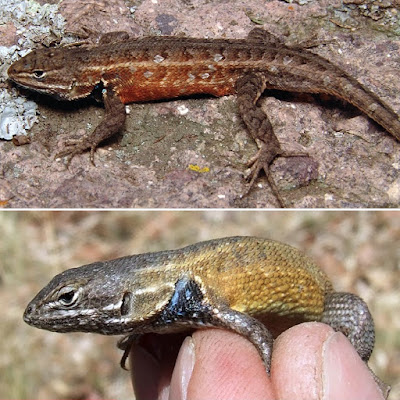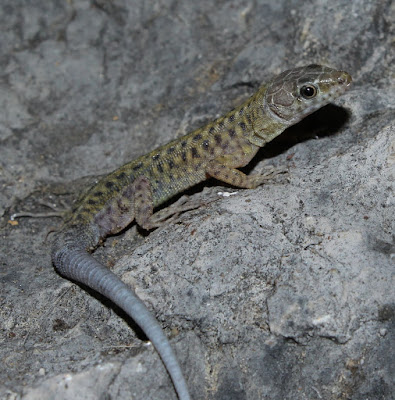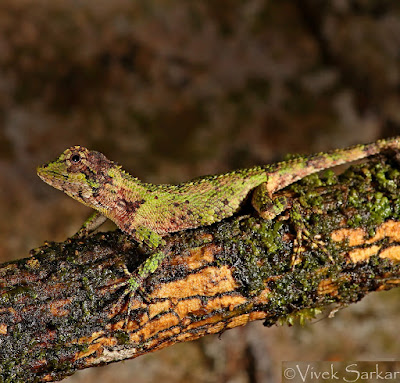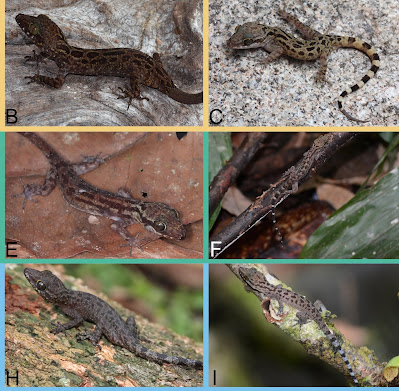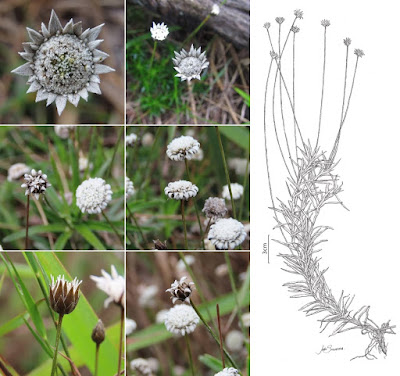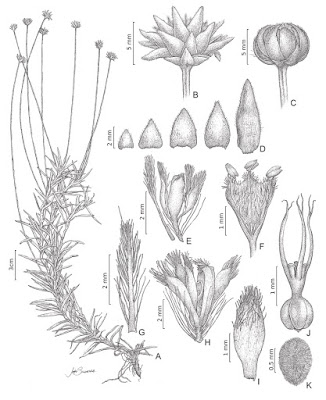[Most Recent Entries] [Calendar View]
Saturday, April 24th, 2021
| Time | Event | ||||||||
| 4:22a | [Herpetology • 2021] Sceloporus dixoni & S. hesperus • Cryptic Diversity Across the Trans-Mexican Volcanic Belt of Mexico in the Montane Bunchgrass Lizard Sceloporus subniger (Squamata: Phrynosomatidae)
Abstract Sceloporus subniger Poglaygen & Smith is a montane bunchgrass lizard distributed across pine-oak forests of central Mexico. Prompted by the discovery of a new population of this lizard in far western Mexico, and by recent studies suggesting S. subniger may be a composite of several distinct species, we examined in more detail the genetic structure of S. subniger. We generated a mitochondrial DNA (mtDNA) dataset from 81 specimens and an ultraconserved elements (UCE) dataset representing thousands of genomic regions from 12 specimens to specifically evaluate the genetic distinctiveness of populations from western Michoacán and adjacent Jalisco along with the newly discovered population in the Sierra de Mascota in western Jalisco. We also recorded morphological data from 47 museum specimens to compare to our genetic data. Results from our analyses of the genetic data, augmented by specimen measurements and scale counts, support the notion that S. subniger is indeed a composite of distinct species. Montane bunchgrass lizards from western Michoacán and adjacent Jalisco, and from the Sierra de Mascota in western Jalisco, each represent distinct new species, which we describe and name here. Keywords: mitochondrial DNA, new species, phylogenomics, Sceloporus scalaris group, ultraconserved elements
Sceloporus dixoni sp. nov. Bryson & Grummer Etymology. The specific epithet is a patronym honoring the late James R. Dixon for his decades of research on Mexican herpetofauna, including several insightful studies of the S. scalaris group. “Doc” Dixon took an early interest in the academic growth of the first author and made a profound and lasting impact. For this and for his encouragement and support, he will be truly missed. Sceloporus hesperus sp. nov. Bryson & Grummer Etymology. The specific epithet is derived from the Greek word hesperos, meaning “western”, and is used in reference to the type locality located at the far western end of the Trans-Mexican Volcanic Belt. Robert W. Bryson Jr. Jared A. Grummer, Elizabeth M. Connors, Joseph Tirpak, John E. McCormack and John Klicka. 2021. Cryptic Diversity Across the Trans-Mexican Volcanic Belt of Mexico in the Montane Bunchgrass Lizard Sceloporus subniger (Squamata: Phrynosomatidae). Zootaxa. 4963(2); 335–353. DOI: 10.11646/zootaxa.4963.2.5 | ||||||||
| 4:30a | [Herpetology • 2021] Lepidophyma lusca • A New Species of Lepidophyma (Squamata: Xantusiidae) from San Luis Potosí, México, with Notes on Its Physiological Ecology
Abstract In recent years, there has been an increase in the descriptions of members of the lizard genus Lepidophyma. Herein, we describe a new species of Lepidophyma from the Huasteca Potosina region of Mexico, previously confused with L. gaigeae, from which it differs in lacking parietal spot, among other characteristics. We inferred its phylogenetic position and provide information on its thermal and hydric physiology, as well as on some other aspects of natural history. Molecular and morphological data supported the independent taxonomic status of the new species, indicating its placement as the sister taxon of L. gaigeae and a wide morphological separation between these species. Lepidophyma lusca sp. nov. has a diurnal-crepuscular activity period and occurs at lower elevations than L. gaigeae. Also, the new species differ from its sister taxon in its physiology, as reflected by its tendency toward higher thermal parameters and water loss rates. With the description of L. lusca sp. nov., the number of species in the genus Lepidophyma rises to 21. Keywords: Reptilia, Lepidophyma lusca sp. nov., Huasteca, tropical night lizards, phylogenetic relationships, ecophysiology, diurnality
Lepidophyma lusca, sp. nov. Lepidophyma gaigeae Ahumada-Carrillo (2013) Etymology: The specific epithet, “lusca”, is the singular feminine noun in Latin for “one eyed”, due the absence of parietal eye.
Diego M. Arenas-Moreno, Francisco J. Muñoz-Nolasco, Adán Bautista-Del Moral, Luis A. Rodríguez-Miranda, Saúl F. Domínguez-Guerrero and Fausto R. Méndez-De La Cruz. 2021. A New Species of Lepidophyma (Squamata: Xantusiidae) from San Luis Potosí, México, with Notes on Its Physiological Ecology. Zootaxa. 4949(1); 115–130. DOI: 10.11646/zootaxa.4949.1.6 | ||||||||
| 4:40a | [Herpetology • 2019] Calotes paulus & C. zolaiking • On the Systematic Status of the Genus Oriocalotes Günther, 1864 (Agamidae: Draconinae) with the Description of A New Species from Mizoram state, Northeast India
Abstract The montane agamid lizard genus Oriocalotes is currently considered monotypic, represented by the species, O. paulus. The systematic status of this taxon has remained questionable since its initial descriptions in the mid-1800s. A detailed molecular and morphological study was carried out to assess the validity of this genus, and its systematic position within the Asian agamid subfamily, Draconinae. Freshly collected and historical museum specimens from the type locality of O. paulus were examined morphologically, along with additional samples collected from localities in Mizoram state, Northeast India. Utilising newly generated molecular sequences (two mitochondrial and three nuclear genes), combined with those previously published for representative genera from the subfamilies Draconinae and Agaminae, Maximum Likelihood and Bayesian phylogenetic trees were constructed. Phylogenetic results suggest that Oriocalotes is part of the widespread South and Southeast Asian radiation of Calotes. Comparative morphological studies (including external morphology, hemipenis and osteology) between Oriocalotes and related genera further support this systematic placement. Oriocalotes is herein regarded as a junior subjective synonym of Calotes. Calotes paulus comb. nov. is also assigned a lectotype and given a detailed redescription based on the lectotype, paralectotypes and additional topotypic material. Furthermore, the specimens collected from Mizoram populations are found to be morphologically and genetically distinct from Calotes paulus comb. nov., and are described herein as a new species, Calotes zolaiking sp. nov. Keywords: Reptilia, Agamids, biodiversity, Calotes, Khasi Hills, Meghalaya, taxonomy | ||||||||
| 4:49a | [Herpetology • 2021] Cyrtodactylus hantu & C. miriensis • Genetically diverse yet morphologically conserved: Hidden Diversity Revealed among Bornean Geckos (Gekkonidae: Cyrtodactylus) Abstract The appreciation of cryptic biological diversity, and the pace at which it is recognized, has greatly increased with the use of molecular systematic techniques. The gekkonid genus Cyrtodactylus Gray, 1827 is one example of a group that has undergone a particularly rapid increase in recognized diversity due to molecular systematic studies. Many of these new species result from recognizing closely related but diagnosable lineages into sister taxa. Our study implements a multi‐faceted approach to delimit cryptic Cyrtodactylus lineages on the Southeast Asian island of Borneo using morphological, ecological, and multilocus genetic data. We use multiple species delimitation models to assess species boundaries and identify clades that warrant further investigation. Unlike most morphologically cryptic species that have recently diverged, we find evidence of cryptic lineages being polyphyletic. Using multivariate statistical analyses, we show minimal phenotypic distinction between putative cryptic species within the C. pubisulcus complex. Despite not finding morphologically diagnostic characters, we demonstrate strong evidence for the specific recognition of C. hantu sp. nov. and C. miriensis sp. nov., which are currently considered conspecific with C. pubisulcus, from Sarawak, Malaysia. Our new concept for C. pubisulcus restricts the geographic range of the species to specific regions in western Sarawak, Malaysia, thus underscoring the need to conserve the limited remaining habitats of these species, as well as the considerable undescribed diversity across Borneo. Keywords: ancestral state reconstruction, cryptic species, new species, species delimitation, Squamata Cyrtodactylus hantu Davis et al., sp. nov. (C. sp. nov. Sibu) Pelagus Bent‐toed Gecko. Etymology: The specific epithet hantu is in reference to the Malay word for ghost. We chose this specific epithet for two reasons: (1) the species was found around the Pelagus Resort, a now abandoned resort in the middle of the rainforest that is said to be haunted; (2) the cryptic characteristics of this species have enabled it to hide in plain sight. Cyrtodactylus miriensis Davis et al., sp. nov. (C. sp. nov. Miri) Miri Bent‐toed Gecko Etymology: The specific epithet miriensis is in reference to the distribution of the species in the Miri Division of Sarawak. Hayden R. Davis, Indraneil Das, Adam D. Leaché, Benjamin R. Karin, Ian G. Brennan, Todd R. Jackman, Izneil Nashriq, Kin Onn Chan and Aaron M. Bauer. 2021. Genetically diverse yet morphologically conserved: Hidden Diversity Revealed among Bornean Geckos (Gekkonidae: Cyrtodactylus). Journal of Zoological Systematics and Evolutionary Research. DOI: 10.1111/jzs.12470 | ||||||||
| 8:19a | [Botany • 2021] Paepalanthus oreodoxus • An Escape from the Espinhaço Range: A New Species of Paepalanthus subg. Xeractis (Eriocaulaceae) from the campos rupestres of Serra do Padre Ângelo, Minas Gerais, Brazil
Abstract Background and aims – Recent botanical discoveries have highlighted the occurrence of campos rupestres in the Serra do Padre Ângelo (SPA), eastern Minas Gerais, Brazil. Here, we introduce the first new species of Paepalanthus subg. Xeractis to be described in the last three decades. Discovered in the SPA, it belongs to an emblematic lineage endemic to the campos rupestres of Minas Gerais. Material and methods – The new species is described based on herbarium material and in situ observations. A morphological phylogenetic analysis was carried out by including the new species in a previously published character matrix. Its spatial distribution is discussed based on the obtained topology. Key results – The new species is endemic to the SPA, but its closest related taxa are endemic to the Espinhaço Range (ER), ca 200 km distant. Its placement in the phylogeny supports the inclusion in P. ser. Fuscati, representing an escape from the ER. We present a clear morphological differentiation between the new species and its closest related taxa. Other similar cases of disjunct distribution among these areas of campos rupestres (SPA vs ER) are reviewed and discussed. Conclusion – Based on the restricted distribution, allied with threats to the habitat, the new species is inserted in the IUCN category of Critically Endangered (CR). This new discovery reinforces the singularity of the SPA and the relevance of biodiversity inventories and conservation studies in the easternmost campos rupestres, and their classification as a priority area for conservation. Keywords: Atlantic Forest; Campos Rupestres; Critically Endangered; Disjunction; Paepalanthus oreodoxus; Serra do Padre Ângelo Paepalanthus oreodoxus Andrino & Gonella, sp. nov. Diagnosis – The new species is morphologically most similar to Paepalanthus mollis Kunth, but differs in the stem branches loosely arranged (vs densely arranged in compact clumps), well-developed, longer and erect (rarely pendulous) stem 8–40(–230) cm long (vs decumbent and inconspicuous stem, rarely up to 12 cm long), leaves laxly arranged along the stem with conspicuous internodes (vs congested in a rosette with inconspicuous internodes), old stems with persistent dead leaves (vs caducous leaves on plants with elongated stems), scapes 3-costate (vs 4–5-costate), involucral bracts of the internal series narrower (0.7–2.2 mm wide vs 2.1–4.1 mm wide) and surpassing the floral disc in 4 to 6 mm (vs 1.5 to 4.5 mm), anthers dorsally brown and cream-coloured in the ventral portion (vs dark brown to light yellow brown), and floral bracts narrowly spatulate to subulate (vs linear to lance-linear or spatulate). Etymology – From the Greek oreo “pertaining to mountains” and doxa “glory”. This epithet was chosen as this gracious new species is exclusively found on the mountaintops of a recently discovered area of campos rupestres, representing an outstanding discovery that reinforces the singularity of the SPA flora and the importance of its conservation. Caroline Oliveira Andrino and Paulo Gonella. 2021. An Escape from the Espinhaço Range: A New Species of Paepalanthus subg. Xeractis (Eriocaulaceae) from the campos rupestres of Serra do Padre Ângelo, Minas Gerais, Brazil. Plant Ecology and Evolution. 154(1); 137-149. DOI: 10.5091/plecevo.2021.1770 |
| << Previous Day |
2021/04/24 [Calendar] |
Next Day >> |
